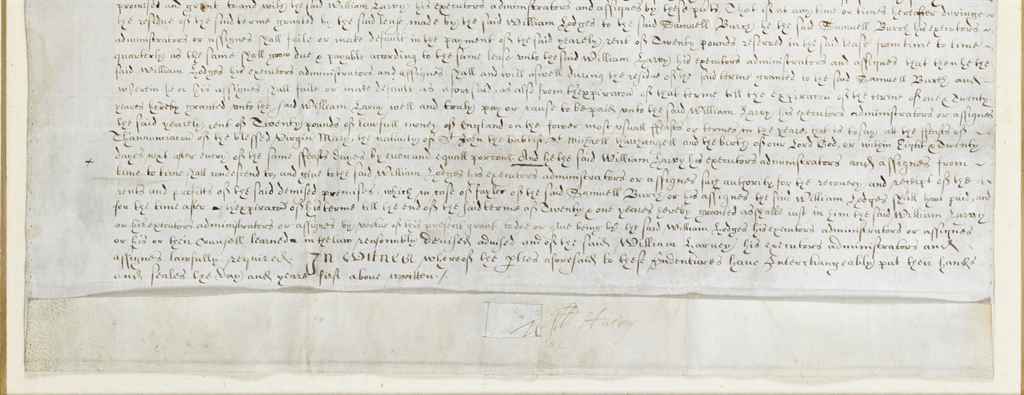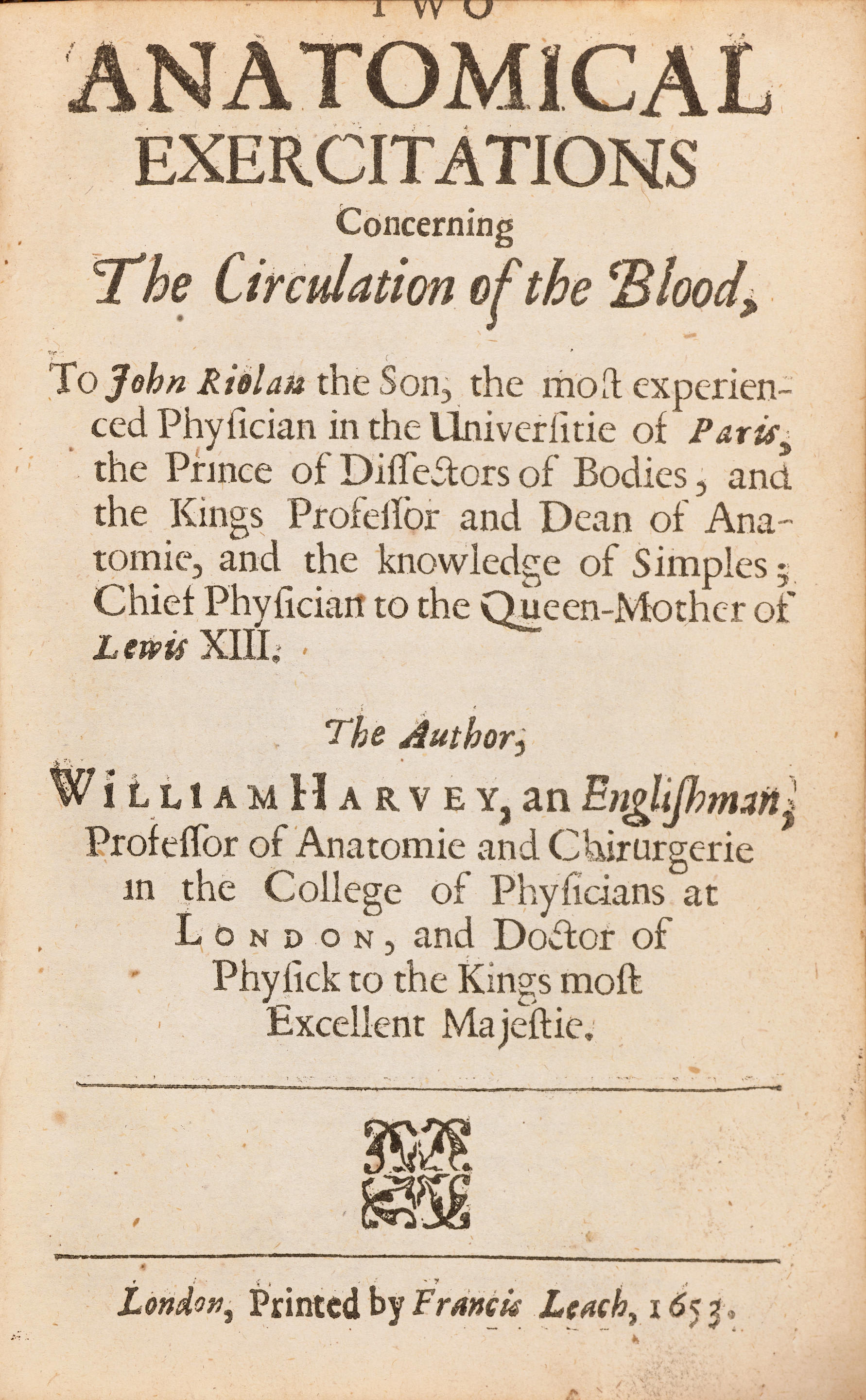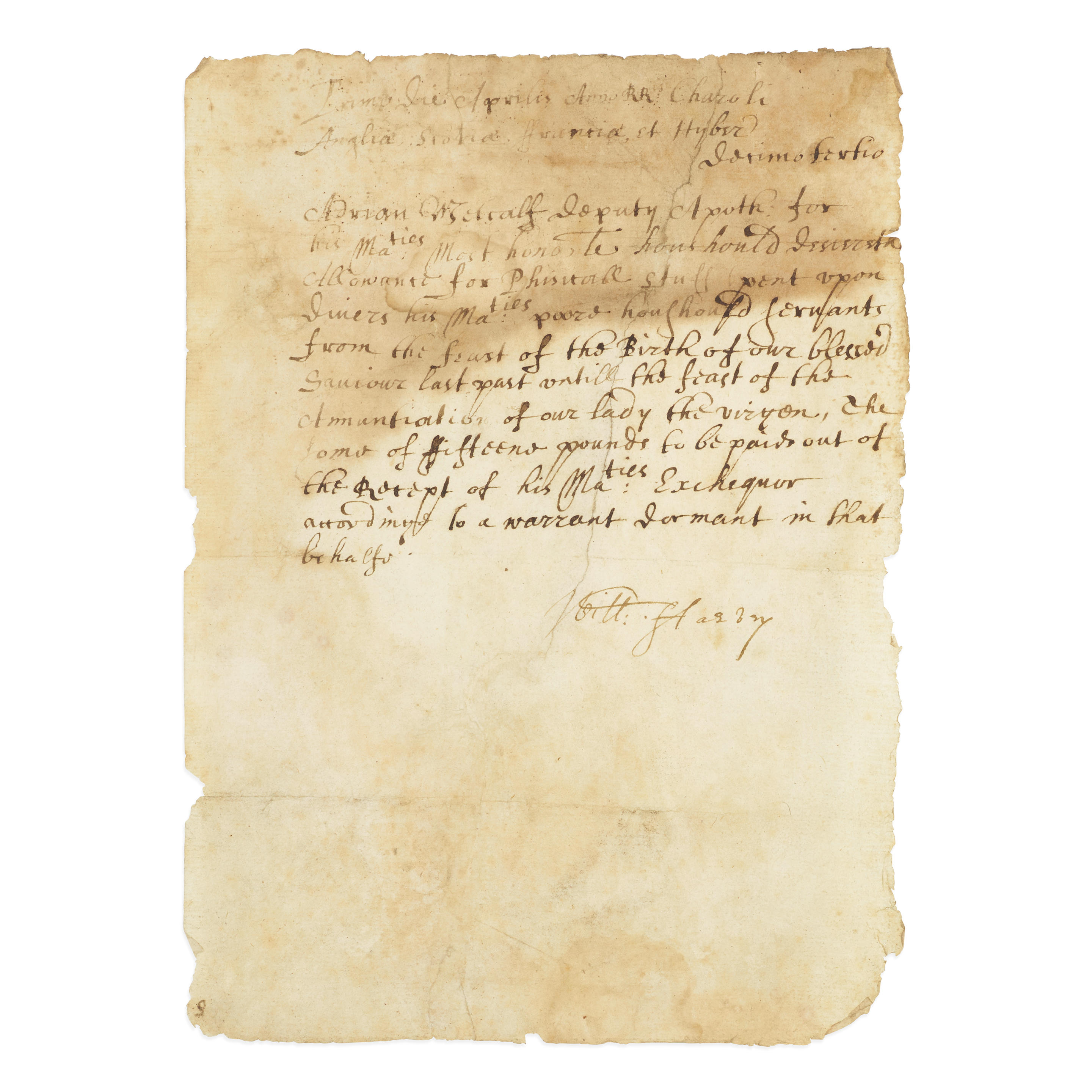Exercitationes duae anatomicae de circulatione sanguinis. Rotterdam: Arnold Leers, 1649. 12mo (123 x 68 mm). Contemporary blind ruled calf. Upper joint starting. FIRST EDITION (see below). "One of [Harvey's] major contributions to medical science" (Keynes). "In this work Harvey first described the circulation of blood through the coronary arteries. Harvey also described experiments that he made to provide further support to his theory of the circulation" (Garrison-Morton). "In 1649, after maintaining a twenty-one year silence against his detractors, Harvey published two essays addressed to Jean Riolan the younger, a Parisian professor of anatomy who had put forth a rival theory of the circulation in his Encheiridium anatomicum (1648). Harvey demolished Riolan's arguments point by point in the first essay, and in the second essay refuted Descartes, who had denied Harvey's claims about the movements of the heart" (Norman). It was not until the 20th century that doctors and medical scientists began to focus attention on the problem of coronary artery disease. The invention of the stethoscope in 1816 led 19th century doctors to emphasize valvular heart disease. The invention of the electrocardiograph in 1902 led to a growing appreciation of the vital importance of the heart as a pump. With the invention of selective coronary angiography in 1958 and coronary artery bypass surgery a decade later cardiologists and cardiac surgeons began to diagnose and treat coronary artery disease. The Exercitationes duae were published in two editions in 1649, the present Rotterdam edition and a Cambridge edition by Roger Daniels (Wing H-1087). Garrison-Morton 10658; Keynes Harvey 32; Krivatsy 5340; Norman 1010; Russell 373; Waller 4116;.
Exercitationes duae anatomicae de circulatione sanguinis. Rotterdam: Arnold Leers, 1649. 12mo (123 x 68 mm). Contemporary blind ruled calf. Upper joint starting. FIRST EDITION (see below). "One of [Harvey's] major contributions to medical science" (Keynes). "In this work Harvey first described the circulation of blood through the coronary arteries. Harvey also described experiments that he made to provide further support to his theory of the circulation" (Garrison-Morton). "In 1649, after maintaining a twenty-one year silence against his detractors, Harvey published two essays addressed to Jean Riolan the younger, a Parisian professor of anatomy who had put forth a rival theory of the circulation in his Encheiridium anatomicum (1648). Harvey demolished Riolan's arguments point by point in the first essay, and in the second essay refuted Descartes, who had denied Harvey's claims about the movements of the heart" (Norman). It was not until the 20th century that doctors and medical scientists began to focus attention on the problem of coronary artery disease. The invention of the stethoscope in 1816 led 19th century doctors to emphasize valvular heart disease. The invention of the electrocardiograph in 1902 led to a growing appreciation of the vital importance of the heart as a pump. With the invention of selective coronary angiography in 1958 and coronary artery bypass surgery a decade later cardiologists and cardiac surgeons began to diagnose and treat coronary artery disease. The Exercitationes duae were published in two editions in 1649, the present Rotterdam edition and a Cambridge edition by Roger Daniels (Wing H-1087). Garrison-Morton 10658; Keynes Harvey 32; Krivatsy 5340; Norman 1010; Russell 373; Waller 4116;.















Try LotSearch and its premium features for 7 days - without any costs!
Be notified automatically about new items in upcoming auctions.
Create an alert